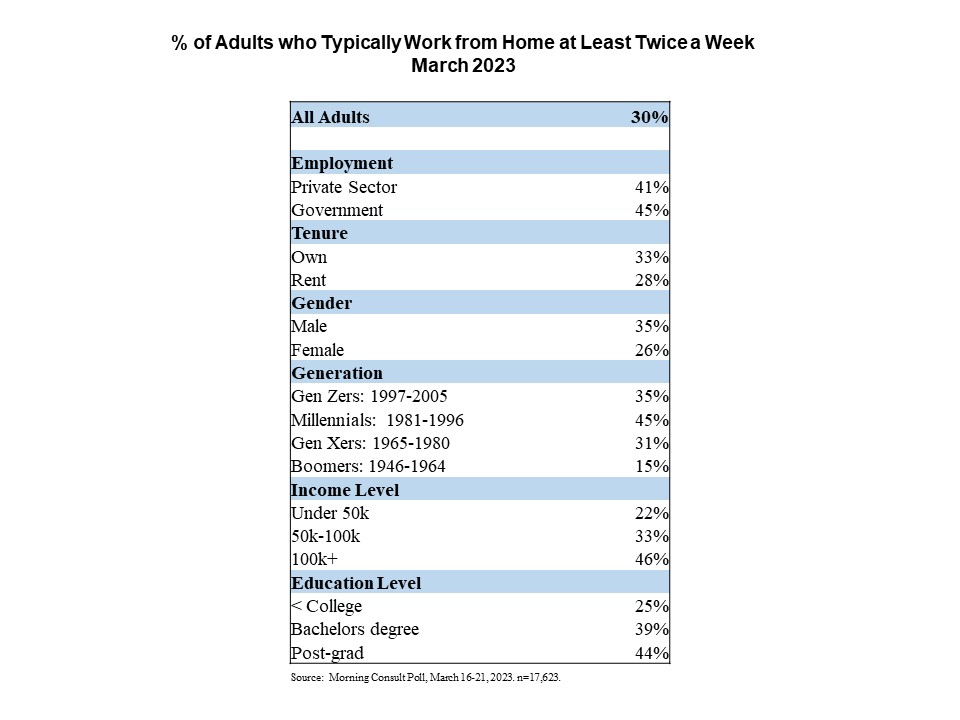Findings from a recent national poll* that reveal 30% of American adults typically work from home at least two days a week could offer clues to the long-term financial health and value of commercial office space in the United States. How this share evolves over time, whether it drops due to employers tightening work-from-home policies or it grows due to more employees earning the benefit not to commute five days a week, will factor into the future office market outlook across the nation.
This post presents a snapshot in time of the demographic characteristics of adults working from home at least twice a week in March 2023.
The three characteristics that make the least amount of difference when it comes to working from home are employment sector, housing tenure and gender. For example, 45% of government workers report being able to work from home at least twice a week, not significantly different from the 41% in the private sector. Similarly, tenure makes little difference: 33% of home owners can work from home this frequently, compared to 28% of renters. And though gender is somewhat more significant, the gap is still below 10 percentage points, as 35% of men report being able to work from home at least two days a week, compared to 26% of women.

In contrast, the three demographic characteristics that make the biggest difference are generation, income and education level. While 45% of millennials, 35% of Gen Zers, and 31% of Gen Xers can work from home at least twice a week, the share is only 15% among boomers. And not surprisingly, the ability to spend less time commuting to work is positively correlated with income and education level. Among adults with annual incomes below $50,000, only 22% can work from home at least twice a week, compared to 33% for those earning $50,000 to $100,000, and 46% for those whose incomes exceed $100,000. Education has a similar effect: 25% of adults with less than a college education reported typically working from home at least two days a week, compared to 39% among those with a bachelor’s degree, and 44% among those with a graduate degree.
*Results are derived from a national poll of a representative sample of American adults. The poll was conducted for NAHB by Morning Consult from March 16 to 21, 2023.
Related


